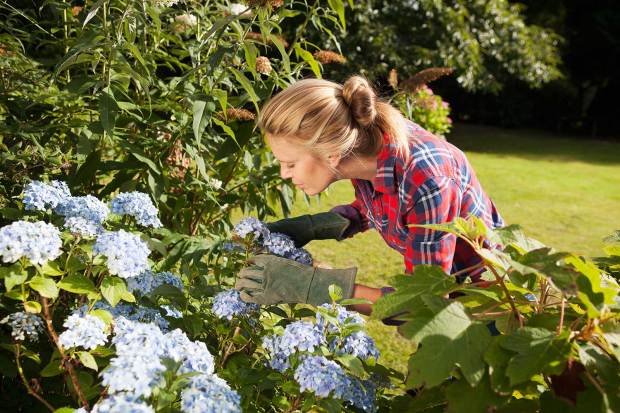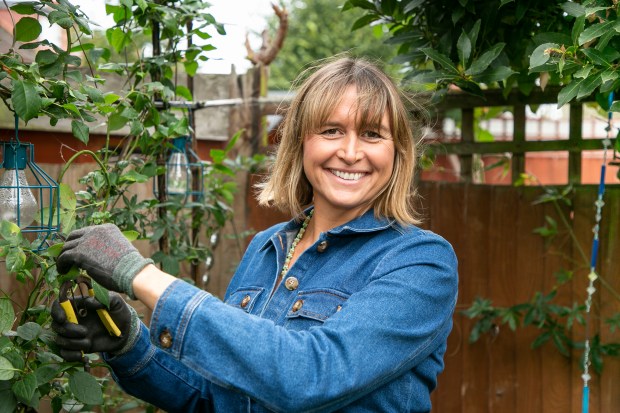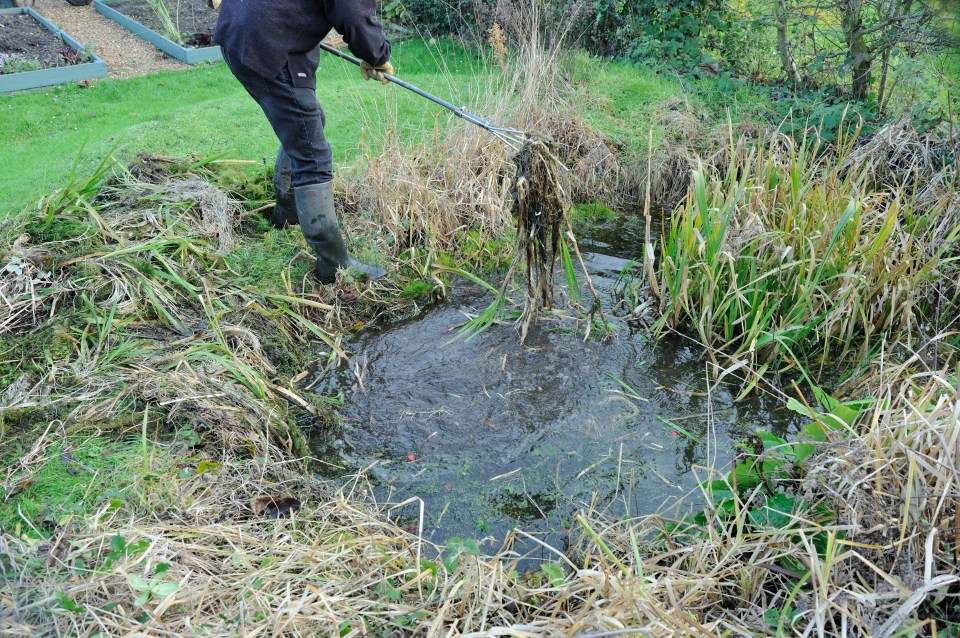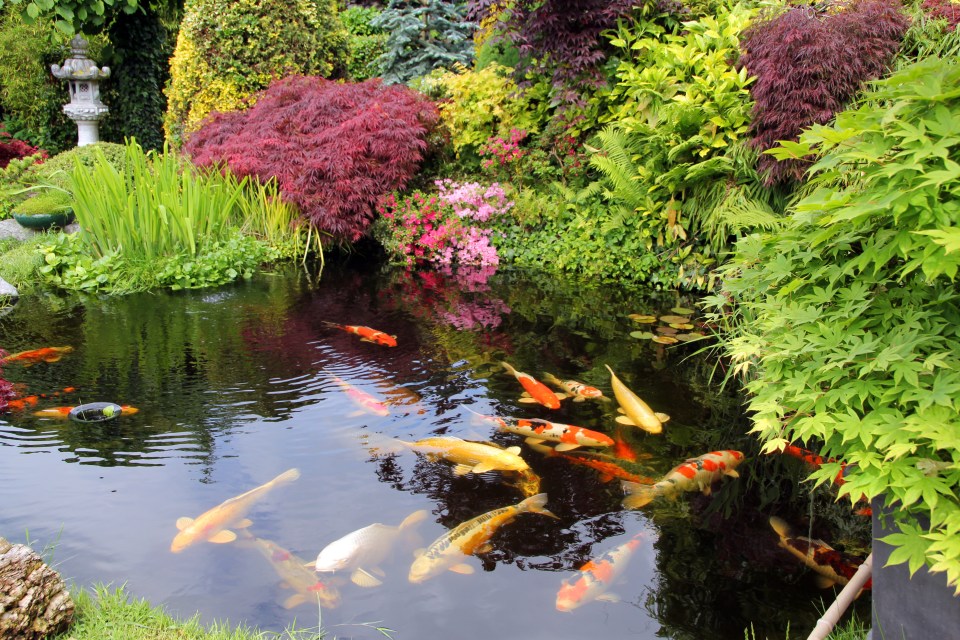ALAN Titchmarsh has revealed how to get your grubby green pond looking fabulous, with barely any faff at all.
According to the gardening pro, if your pond looked like ‘pea soup’ in summer, there’s a few simple steps you can take to revive it this autumn.
Sharing his advice on the BBC Gardeners’ World Magazine Podcast, during a Tea-Break Tutorial on pond care, Alan Titchmarsh, 75, revealed why you should get a pond in your garden if you don’t have one already.
He explained: “The great thing about ponds in gardens is they bring so much to the party.
“Reflection, they bring the sky down to the ground and light comes into the garden, unless of course it’s tipping it down and then if it is, you get movement on the surface.
“Watching raindrops fall on a pond is a lovely way of wasting time. I love doing it. I sit doing it when I write my pieces for Gardeners’ World magazine, looking out of a window that has a wildlife pond immediately outside it. I can’t tell you how much time I waste looking at what’s going on.
“You’ll encourage wildlife. It really is worth having one.”
The gardening expert and broadcaster, revealed the reason why ponds often go discoloured in summer.
He continued: “The easiest ponds to look after are larger ones. If a pond is very small, in summer, it tends to heat up like a saucepan of water and that’s when it goes green and looks like pea soup.
“So if you can make your pond as big as possible, you’ll have a body of water which doesn’t heat up quite as rapidly as one that is tiny and shallow.
“And if you’ve got an edge that is gradual, that will mean that amphibians – frogs, toads and newts – can come in for a drink and get in and out safely, without falling in and being unable to get out.
“Starting in winter, when the plants have died down around the edge, it’s pond tidying time.
“Don’t be too tidy around the edge of your pond – frogs and toads tend to come out of the water and find somewhere cosy to burrow a little bit, so be a little big ginger about what you do cut down.
“As spring comes, that’s when, particularly with new ponds, they tend to heat up and the water might go green.”
Gardening tips and hacks

In order to stop your pond from going a nasty shade of green, Alan revealed the plant that you’ll need to nab.
He advised: “The key is to make sure you’ve got plenty of submerged oxygenating plants in there, not just Canadian pond weed which is very rampant. It’s good, but it’s rampant, so thin it out a bit if you’ve got too much of it.
“It will make sure there’s plenty of oxygen in the water, which is not only good for water wildlife but good for keeping the water clear.”
Do get a pond. You’ll find that pond care is easier than you think
Alan Titchmarsh
Not only this, but Alan suggested why a net could be the solution to keeping your pond looking fresh, as he highlighted: “Then of course you get to autumn, and that’s when the leaves come down.
“This is why it’s important to site a pond away from overhanging branches of trees. They’ll float on the surface and sink to the bottom and encourage a build-up of silt.
September gardening jobs

With September starting, so does autumn, and The Sun’s Gardening Editor Veronica Lorraine has a few tasks to keep you busy as the summer sun winds down.
1. Starting thinking about Spring bulbs
Its early bulb time! As well as the more traditional daffodils, crocuses, alliums and bluebells, try snake-head fratillaries for something slightly different.
2. Remember the bees
Make sure you’re still looking after the bees with autumn flowering pollinators – like sedums, honeysuckle and asters.
3. Dig and enjoy your potatoes
Maincrop potatoes are ready to dig up – make sure you get them all so they don’t get slug damage.
4. Change your lawn mowing schedule
Raise the height of your lawn mower and start to reduce the amount of mowing you do. GIve it an autumn feed, especially if you didn’t get round to it in Summer and start to rake to remove thatch.
5. Plant out new perennials while the soil is still warm.
6. Take salvia cuttings
It’s as easy as cutting a shoot tip above a node and chucking it in a glass of water to see if it sprouts roots. Especially with tender Salvias which wont survive the winter.
7. Keep camelias well watered to make sure that buds form next year.
8. Keep on deadheading and watering your hanging baskets
They should keep going until the first frosts.
9. Get pumpkins Halloween ready
Remove any leaves shading pumpkins to make sure they’ll be ready for halloween – and make sure you keep watering them, they’re very thirsty.
10. Check on your pond
Net your pond to stop it filling with fallen leaves when the trees start to drop.
“If it’s a tiny pond, you can net it during autumn to capture the leaves, but generally speaking, if it’s a large pond, it will cope with the amount of leaves that will fall in it, and you don’t have to worry too much.
“The important thing is that you have a pond which is self-sustaining, a wide range of plants, to give you a season of flowering and to encourage a mass of wildlife that otherwise wouldn’t have ventured close to your garden.”
If you’ve been thinking about getting a pond in your garden, Alan advised: “Do get a pond. You’ll find that pond care is easier than you think.
“You’ll find there’s not a lot of work to do with a pond if you manage it properly.”



